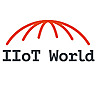
The safety of students, teachers, and faculty members has become a priority nationwide, and IoT technology provides ways that educational campuses can improve their security measures while addressing the unique difficulties of school safety. For example, visitors, parents, staff, teachers, and students’ family members are all required to come on campus for a multitude of reasons. With such a varied group of people entering the premises at different times, it’s a challenge to keep note of every single visitor and their reasons for being on campus accurately. In addition, schools need to be easily accessible for students and teachers, but still need to prevent unauthorized individuals from gaining access. Let’s take a look at a few cloud-based IoT technology options that can be introduced to school campuses to ensure students and staff are safe.
What is Cloud-Based IoT Technology?
Cloud-based IoT technology is a means of accessing data, files, storage, software, and information in one place. Put more simply, the cloud allows connected devices and systems to consolidate data and information in a more accessible format. How does this help make schools safe? When it comes to safeguarding campuses, cloud-based systems allow schools to quickly access security controls, system data, and view visitor information efficiently and effectively.
Examples of IoT Technologies for School Safety
The benefits of using cloud-based technology range from increased efficiency to convenience. It is essential to research and consider the different types of IoT technology for school safety and determine which products and systems offer the greatest benefit. Because each school and campus faces unique security risks and vulnerabilities, not all cloud-based technology will be necessary at every location.
#1: Wireless Smart Door Locks
Used for doors inside of buildings, wireless smart door locks help to manage visitor and staff access. Wireless smart door locks can be used in a variety of locations, such as for a computer or science lab, library, staff offices, or certain classrooms where access needs to be restricted. Through cloud-based software, the locks can be controlled remotely. This ensures that whoever is in charge of granting entry access can unlock or lock doors no matter where they are.
Those who need daily access to doors equipped with smart locks can either use encrypted key cards or fobs or gain access through a touchless mobile app. Another benefit of using wireless locks with your school door locking system is that you can quickly deploy safety measures remotely in an emergency or lockdown.
#2: Integrated Access Control
Another IoT technology for school safety is integrated access control, an optimal system that provides data on access to a school in real-time. Built on open standards, a cloud-accessed system can easily connect with other school security systems. By implementing cloud-based access control and integrating across video, alarm, and identity provider systems, schools have increased visibility on access control points of the school, making it easier to manage who comes in and out of the building. Additionally, remote unlocking in the cloud allows administrators to open specific doors for faculty, emergency personnel, or the police without having to be onsite.
Using integrated access control allows schools to be more proactive in preventing risk and more responsive when incidents occur. Integrating access control and video security in the cloud facilitates more accurate identity checks and visitor management and allows first responders to analyze relevant footage should an emergency occur.
#3: Visitor Management Systems
The easiest way to know who is entering a building is by using visitor management systems. This way, schools can keep a log of additional people entering the premises besides students and faculty, facilitating authorization processes and keeping a record of visitor information. Today’s more advanced IoT-connected visitor systems can facilitate school safety through mobile check-ins and connect with access control for simplified, secure guest entry.
Having this information in the cloud helps if any emergency arises, as administrative teams can quickly audit visitor logs and send information to first responders. It’s much more efficient to find the necessary information in an easily accessible digital visitor log and takes the burden off a busy school receptionist.
#4: Threatening Noise Detection Sensors
A noise detection sensor works by using acoustic, vibration, or optical sensors to recognize sounds associated with threats. When IoT noise detection sensors pick up a sound, transmitters are activated and send a message to the local authorities and police. While no school wants to have these kinds of emergencies, being prepared and leveraging technology can help facilitate a faster emergency response and lessen the impact on campus. Noise detection sensors are a great way to inform security personnel and first responders as soon as an incident occurs, and, when integrated with other security systems such as video cameras and access control, can help school security administrators take necessary actions to safeguard students and faculty in an emergency.
#5: Automation Lockdown Systems
Every educational facility should be equipped with a school lockdown system in the event of shooting incidents or other emergencies. In the latest versions of this technology, cloud-based lockdown systems include the ability to activate from a smartphone application. This ensures authorized personnel can activate a lockdown no matter where they are, saving time in critical situations. Additionally, many lockdown systems can also alert first responder teams and send updates, such as door locations and live video, giving them the most up-to-date information and preventing miscommunications. Look for automatic school lockdown systems with plans for different scenarios, as well as the ability to easily connect to other IoT devices in the cloud.
IoT and School Safety
Paired with strong emergency preparedness plans and strategies, cloud-based IoT security technology can aid with school safety, and give parents, students, and faculty greater peace of mind. By using technology that can be activated with a click on a mobile device or on a cloud-based platform, schools can enhance their safety and security systems. Cloud-based IoT technology continues to adapt as new challenges arise, and can help educational facilities stay ahead of the latest risks and provide school safety. More awareness of the different types of technology available will increase the number of schools that know and understand how they can apply these systems to their buildings, thus creating a safer and more secure environment for both students and staff.




 Related Podcast Episode
Related Podcast Episode




 Related Applications
Related Applications


 Latest IoT News
Latest IoT News







